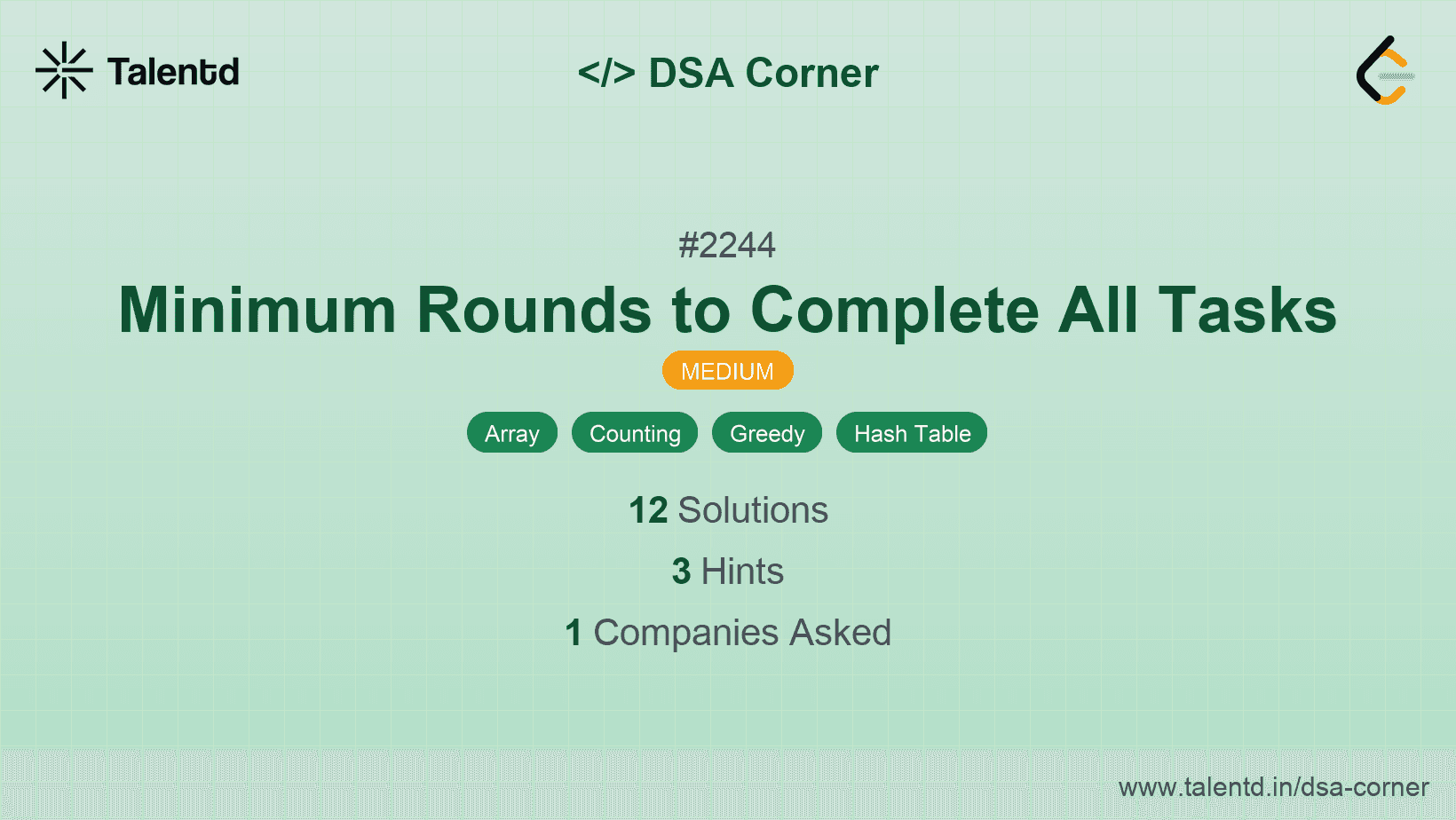
Sponsored
Sponsored
This approach involves breaking down the problem into smaller subproblems, solving each of them independently, and combining their results in an efficient way. It often uses recursion to handle each subproblem.
Time Complexity: T(n) = 2T(n/2) + O(n) => O(n log n)
Space Complexity: O(log n) due to recursion stack space.
1public class Solution {
2 public void solveProblem(/* parameters */) {
3 // Base case solution
4 if (/* base condition */) {
5 return;
6 }
7 // Divide
8 int mid = /* calculate middle */;
9 // Conquer
10 solveProblem(/* left part */);
11 solveProblem(/* right part */);
12 // Combine
13 // combine left and right solutions
14 }
15
16 public static void main(String[] args) {
17 Solution sol = new Solution();
18 // Call the method with initial parameters
19 sol.solveProblem(/* initial parameters */);
20 }
21}Java implementation of the divide and conquer approach using recursion to solve subproblems and combining their solutions.
This approach involves solving complex problems by breaking them into simpler overlapping subproblems, storing the results of subproblems to avoid redundant calculations, and constructing a solution from these stored results.
Time Complexity: O(n)
Space Complexity: O(n)
1
Python solution using a list to store the values of subproblems. It recursively calculates and stores results for use in overlapping subproblems.